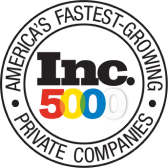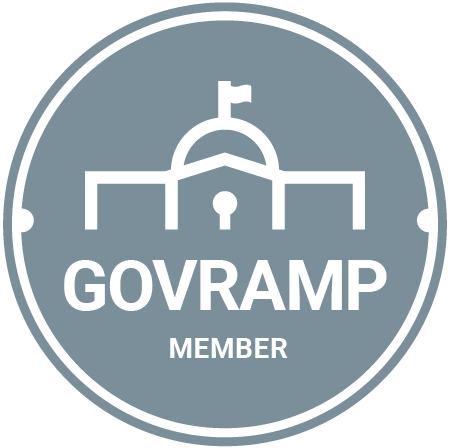ERP Integration is how organizations connect its ERP (Enterprise Resource Planning) software with other applications. The goal is to share data between systems to boost productivity and understanding and to have one reliable central source.
Today, leading government agencies prioritize streamlining operations and enhancing efficiency by integrating their ERP and procurement systems. Integrating these two vital technologies brings many benefits, including improved data accuracy, enhanced decision-making capabilities, and significant cost savings.
What is an ERP System?
An ERP system is software that brings together different business processes and functions across an organization into one system. These business processes include finance, human resources, supply chain management, manufacturing, and project management.
The main goal of an ERP system is to improve efficiency by providing a single platform. Businesses use this platform to manage and automate important activities, improving coordination between departments and promoting collaboration. Additionally, it offers real-time visibility into important metrics and performance indicators.
- Centralized Database: A centralized database stores all relevant data, ensuring consistency and integrity of information.
- Integration: ERP systems integrate various modules or applications to facilitate a seamless flow of information across departments.
- Automated Processes: ERP systems automate routine tasks and workflows, reducing manual effort and minimizing errors.
- Reporting and Analytics: They provide tools for generating reports and analyzing data to support decision-making processes.
- Scalability: ERP systems are designed to accommodate the needs of growing businesses, enabling scalability as the organization expands.
- Customization: Most ERP systems allow you to customize modules and processes to fit your agency’s needs.
What is Document Process Automation™?
Document Process Automation™ (DPA) simplifies the creation of complex documents in large quantities by automating the process.
- Unites Data and Text from Different Sources: Puts specific excerpts into document templates, including simple text blocks or more sophisticated elements, such as tables, graphs, and images.
- Document-Centric: Positions documents as the primary user interface for accomplishing work. Tasks, comments, reviews, and approvals all happen within the context of the document.
- Deeply Collaborative and Interactive: Collaboration is embedded within the work itself. Robust and granular persona-based permissions and approvals allow organizational stakeholders to access specific features.
- Data-Driven: Leverage a virtual data repository with interactive components, including enriched text, form fields, status, tasks, digital signatures, calculations, and more.
As the virtual document navigates its lifecycle, the embedded information serves as data sources to execute business logic decisions. One example is determining if a document requires an additional signature based on responses to a specific question. This decision is made by reviewing the information provided on a particular page.
Additionally, embedded information can be extracted as structured data to trigger actions in external systems, such as automatically creating tasks from a contractor’s obligations listed in a contract or generating SKUs from an invoice for an asset management system.
Government agencies who frequently need to develop complex, data-driven documents save time and ensure documents are accurate, formatted correctly, and compliant with laws and regulations.
How Can Government Agencies Integrate Document Process Automation™ and ERP Systems?
Agencies can connect Document Process Automation™ and ERP systems using add-on software with integrated API or flat file connections. The add-on software maps fields to ERP software fields, so the software combination works together and enables users set up and streamline workflows to match their business processes.
Government agencies can integrate Financial ERP and procurement systems to improve visibility, enhance efficiencies, and achieve greater program effectiveness.
Top 5 Benefits of ERP and Document Process Automation™ System Integration
1. Seamless Data Flow and Accuracy: By integrating these systems, the ERP system can sync procurement data instantly. With disparate systems, data often gets siloed, leading to inconsistencies, errors, and duplication of efforts. Integrating these systems allows procurement data to be synced with the ERP system instantly. This includes purchase orders, supplier information, and inventory levels. This ensures data accuracy and eliminates manual data entry, reducing the risk of errors and delays in processing orders. Having correct and current information allows decision-makers to make informed choices. It also helps them improve inventory levels and negotiate better terms with suppliers. Ultimately, this leads to saving money and improving efficiency.
2. Enhanced Visibility and Control: Integrating ERP and procurement systems gives agencies enhanced visibility and control over their procurement processes. By combining procurement data with the ERP system, stakeholders can see the entire procurement process, from request to payment. This integration provides a comprehensive view of the process. This visibility enables better tracking of orders, monitoring supplier performance, and identifying bottlenecks or inefficiencies in the procurement process. Moreover, integration helps put centralized procurement policies and compliance measures into action, ensuring everyone follows regulatory rules and internal guidelines for procurement. Agencies can solve problems, reduce risks, and improve procurement strategies with more control and visibility.
3. Streamlined Workflows and Improved Collaboration: Integrating ERP and procurement systems streamlines workflows and fosters collaboration among departments involved in the procurement process. Integrated systems automate purchase requisitions, approval routing, and purchase order conversion in ERP, removing manual handoffs and reducing processing time. In addition, integrated systems facilitate seamless communication between procurement teams, finance departments, and suppliers, enabling real-time exchange of information, updates, and status notifications. Improved teamwork accelerates the buying process and enhances coordination between departments. This leads to increased productivity and fosters a team-oriented culture within the company.
4. Optimized Supplier Relationship Management: Integrating ERP and procurement systems empowers agencies to optimize supplier management and cultivate stronger vendor relationships. Agencies gain insights into supplier performance, history, and contracts by consolidating supplier data within the ERP system, enabling informed supplier selection and negotiation. Integrated systems assist organizations in evaluating supplier performance through metrics such as delivery time, quality, and pricing. This evaluation helps organizations identify the most suitable suppliers and leverage their strengths for maximum benefit. Furthermore, integration enables seamless communication with suppliers, facilitating order processing, invoicing, and payment reconciliation. Strengthened supplier relationships result in improved service levels, reduced lead times, and increased reliability, ultimately contributing to enhanced customer satisfaction and competitive advantage.
5. Data-driven Decision-Making and Strategic Insights: Integrating ERP and procurement systems empowers government agencies to leverage data-driven insights and analytics for strategic decision-making. Agencies can use the ERP system to analyze and report on important metrics. These metrics include spending, vendor performance, and inventory management. By inputting procurement data into the ERP system, agencies can easily access and analyze this information. This allows them to make informed decisions and improve their overall procurement processes. Advanced analytics tools enable agency leaders to identify trends, patterns, and opportunities for cost optimization, process improvement, and risk mitigation. Moreover, integration enables predictive analytics capabilities, allowing government agencies to forecast demand, anticipate supplier issues, and optimize inventory levels. Agencies can drive continuous improvement and capitalize on emerging opportunities by harnessing the power of data-driven decision-making.
Integrating financial ERP and procurement systems helps government agencies improve efficiency and growth. The integration provides seamless data flow, enhances visibility to streamlined workflows, and enables data-driven decision-making.
Authorium combines compliance, productivity, and collaboration functionality in one end-to-end platform to consolidate siloed legacy applications in government.
We unlock data hidden within documents to power data-driven decision-making and support other critical operational systems.
Designed for government agencies with complex processes, such as procurement, budgeting, policies, HR, and grant management, our platform ensures regulatory compliance, facilitates collaboration and visibility, and increases agency efficiency – freeing up staff for higher-value work. Authorium’s deep institutional knowledge and real-world government experience are unparalleled by other companies.
Click here to learn more about how Authorium can help your agency streamline processes and accelerate program results.



